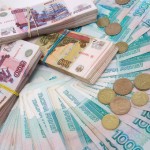Yesterday’s trade saw EUR/USD within the range of 1.0810-1.0970. The pair closed at 1.0937, soaring 1.02% on a daily basis, or the first gain in the past five trading days. The daily rate of increase has also been the sharpest one since June 29th, when the cross appreciated 2.38%. In addition, the daily high has been the highest level since July 15th, when a high of 1.1036 was reported.
At 7:00 GMT today EUR/USD was up 0.18% for the day to trade at 1.0955. The pair touched a daily high at 1.0966 at 6:38 GMT.
Fundamentals
Euro area
Italian retail sales
At 9:00 GMT the National Institute of Statistics (Istat) is to report on the nations retail sales regarding May. In April annualized retail sales showed a flat performance, which followed a 0.2% drop in March.
In monthly terms, retail sales rose 0.7% in April, which has been the strongest monthly rate of increase since February 2012, when retail sales climbed 0.9%.
This indicator reflects the change in the total value of inflation-adjusted sales by retailers in the country and provides key information regarding the consumer spending trend, while the latter is a key driving force behind economic growth. An increase in monthly retail sales will usually provide limited support to the common currency and vice versa.
United States
Sales of Existing Homes
The index of existing home sales in the United States probably gained 1.2% to a level of 5.40 million in June compared to May. If so, this would be the most considerable number of existing homes sold since August 2013, when a level of 5.48 million was reported. In May compared to April existing home sales rose 5.1% to 5.35 million units.
The sample of data for the index encompasses condos, co-ops and single-family houses. Statistical data on existing home sales is often used along with statistical figures regarding the new home sales and pending home sales, with the major objective being to draw a conclusion how the nation’s housing sector is performing, regardless of interest rates. The most active house-purchasing period in the United States is usually between the months of March through June. Therefore, in case statistical data revealed a sudden drop in the number of homes sold rather than an improvement during this period, this would be considered as a signal of weakness in the country’s housing market.
The report on existing home sales usually does not cause a real direct impact on US economy. Actually, this effect appears to be minimal, due to the fact that nothing is produced with the mere sale of an existing home. In terms of economic activity, the sale of an existing house may be related only to interior design and purchases of new furniture.
The reason why markets pay a certain attention to existing home sales report is that it reveals much about the general course of the nation’s economy. A major part of the population considers a house as a sign of wealth and, unlike the money wealth, which is concentrated in certain regions of the country and held by the wealthiest representatives of the population, ”housing wealth” is evenly distributed across the country.
In case the index increased more than anticipated, this would have a limited bullish effect on the US dollar. The National Association of Realtors (NAR) is to release the official figure at 14:00 GMT.
Bond Yield Spread
The yield on German 2-year government bonds went as high as -0.210% on July 21st, after which it slid to -0.215% at the close to remain unchanged on a daily basis.
The yield on US 2-year government bonds climbed as high as 0.714% on July 21st, or the highest level since July 2nd (0.716%), after which it fell to 0.686% at the close to lose 2.4 basis points (0.024 percentage point) for the day.
The spread between 2-year US and 2-year German bond yields, which reflects the flow of funds in a short term, shrank to 0.901% on July 21st from 0.916% during the prior day. The July 21st spread has been the lowest one since July 17th, when the difference was 0.884%.
Meanwhile, the yield on German 10-year government bonds soared as high as 0.798% on July 21st, after which it slid to 0.775% at the close to appreciate 0.009 percentage point compared to July 20th.
The yield on US 10-year government bonds climbed as high as 2.403% on July 21st, or the highest level since July 15th (2.432%), after which it slipped to 2.331% at the close to lose 4.9 basis points (0.049 percentage point) on a daily basis.
The spread between 10-year US and 10-year German bond yields narrowed to 1.556% on July 21st from 1.623% during the prior day. The July 21st yield difference has been the lowest one since July 17th, when the spread was 1.557%.
Pivot Points
According to Binary Tribune’s daily analysis, the central pivot point for the pair is at 1.0906. In case EUR/USD manages to breach the first resistance level at 1.1001, it will probably continue up to test 1.1066. In case the second key resistance is broken, the pair will probably attempt to advance to 1.1161.
If EUR/USD manages to breach the first key support at 1.0841, it will probably continue to slide and test 1.0746. With this second key support broken, the movement to the downside will probably continue to 1.0681.
The mid-Pivot levels for today are as follows: M1 – 1.0714, M2 – 1.0794, M3 – 1.0874, M4 – 1.0954, M5 – 1.1034, M6 – 1.1114.
In weekly terms, the central pivot point is at 1.0951. The three key resistance levels are as follows: R1 – 1.1077, R2 – 1.1323, R3 – 1.1449. The three key support levels are: S1 – 1.0705, S2 – 1.0579, S3 – 1.0333.





